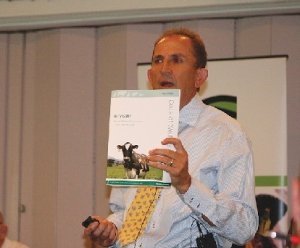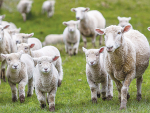“The purpose is to update and review New Zealand Veterinary Association guidelines and make sure consistent procedures are used by vets,” ministry adviser and vet Richard Wild told Rural News last week.
“It’s part of a broader animal welfare project at the ministry, that by safeguarding animal welfare we’re safeguarding our [primary production] reputation. Fitness for transport is one of the major animal welfare points so we’re trying to get the veterinary profession aligned on it.”
Roadshows were held last week in Oamaru, Milton and Invercargill following an earlier series of events, and they conclude next week in Gisborne and Waipukurau.
“The number of large animal vets is about 800. Hopefully we’ll get to about half of those,” says Wild.
The roadshows follow last September’s launch of the Animal Welfare (Transport within New Zealand) Code of Welfare 2011.
It spells out that animals with any injury, signs of disease, abnormal behavior or physical abnormalities that could compromise their welfare during a journey should not be transported unless a veterinarian has declared them fit to do so.
In-growing horns, inadequate body condition – below score 3.0 for dairy cows – and lameness, defined as able to bear weight evenly across four limbs, are included.
While most farmers should be aware of such requirements, there is a small percentage that don’t get the message and need some education, says Wild.
“A lot of the welfare cases we [ministry vets at meatworks] see are about education. But about 10% of cases get referred to our compliance and response group for further investigation.”
Typically that’s 60-70 cases/year, some of which result in prosecutions.
All parties are sent a letter “highlighting what happened and the owners’ obligations under the Animal Welfare Act.” An attempt to contact owners by telephone is made, and the incident logged on an MPI database.
Recurring incidents under the same owner will result in “a whole bunch of people on your doorstep,” warns Wild.
Farmers, livestock agents and transport operators can expect greater promotion of the code through advertising and sessions at field days and conferences etc later this year.
In the meantime, the message is don’t consider sale of an animal as the solution to a welfare issue.
“Slaughter plants are not a dumping ground for compromised animals, and it’s not just cattle... They will be seen by a ministry vet and you are likely to get an educational letter, or if it’s a repeat or severe case, likely to get you referred to our compliance response people.”
There are 200 ministry vets nationwide – at least one at every works.
Wild stresses the aim should be timely intervention on farm to prevent animals ever being in a condition where they’re not fit to travel, but if in doubt about fitness for transport, contact your vet, he says.
He or she may certify the animal as fit to travel, or recommend alternative measures to remedy the problem.
In extreme cases that may be euthanasia on site and sale for petfood rather than live transport.
The distances stock are sometimes carted contributes to problems.
“One of the major messages to the vets going to the roadshows is that the animal procurement system in New Zealand is very commercial and people buy and truck animals all over the place.... Vet certificates for transport need to make clear directions to the owner that the animal is to go to this or that plant, and is not fit for transport for long distances.”
• Copies of the transport welfare code and accompanying explanatory report are online at www.biosecurity.govt.nz/regs/animal-welfare/codes/alphabetically or by request from This email address is being protected from spambots. You need JavaScript enabled to view it.

















